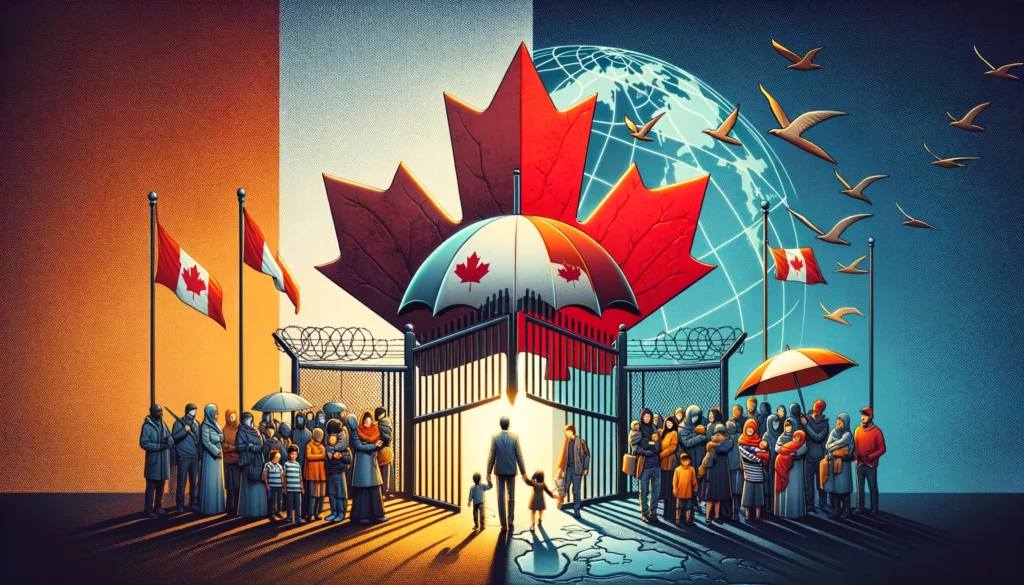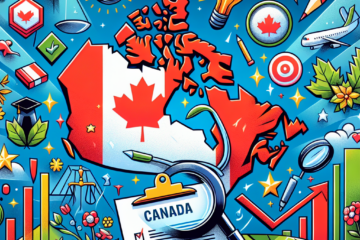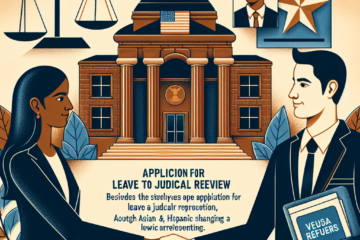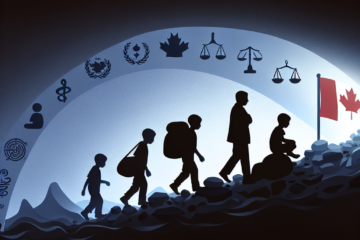Table of contents
- Canada’s Magnetism for Global Migrants
- Immigration Overview: Evolution and Current Trends
- Management of Immigration and Citizenship Programs
- Legal Foundations of Canadian Immigration
- Interpretation Tools in Immigration Law
- Understanding the Complexity of the System
- Decision-Making Authority and Its Importance
- Ministers and Their Roles
- Decision-Making Powers
- The Role of the Immigration and Refugee Board (IRB)
- Federal Courts: Ensuring Fairness and Legal Compliance
- Supreme Court of Canada: The Ultimate Legal Authority
- Navigating Through Layers
- Pax Law can help you!
Canada’s Magnetism for Global Migrants
Canada stands out as a global beacon, attracting people from all corners of the world due to its strong social support systems, cultural diversity, and rich natural resources. It’s a land that offers a blend of opportunities and quality of life, making it a top choice for migrants seeking new horizons. In 2024, Canada aims to welcome approximately 475,000 new permanent residents. This initiative highlights the country’s dedication to attracting global talent. It also reflects Canada’s desire to make a significant contribution to the global economy.

Immigration Overview: Evolution and Current Trends
Canadian immigration has witnessed a significant transformation over the past 40 years. Initially centered around family reunification, it has gradually shifted focus towards attracting economic migrants. This shift reflects Canada’s evolving priorities in a globalized economy, where attracting skilled labor and investment is key. Programs like the Yukon Community Pilot and Morden Community Driven Immigration Initiative illustrate this trend, aiming to draw economic immigrants to bolster smaller, often rural, communities. The increased complexity of the immigration process, with provinces playing a more significant role, mirrors the diverse needs and capacities across Canada.
Management of Immigration and Citizenship Programs
Since its introduction in June 2002, the Immigration and Refugee Protection Act (IRPA) along with its associated regulations, has established a thorough framework for Canada’s immigration and refugee policies. This framework, carefully crafted, aims to strike a balance between the nation’s security needs and the enablement of legal immigration. Additionally, the incorporation of Ministerial Instructions (MIs) under the IRPA brings an added layer of flexibility. Consequently, this allows for more adaptable and responsive modifications to immigration policies and procedures, ensuring the system remains dynamic and up-to-date with evolving circumstances.
Legal Foundations of Canadian Immigration
Canada’s immigration system is underpinned by a mix of domestic laws, like the IRPA and the Citizenship Act, and international agreements, such as the United Nations Convention Relating to the Status of Refugees. The IRPA sets forth clear objectives for immigration and refugee policies, aiming to support Canada’s economic growth while upholding its humanitarian obligations. This blend of domestic and international laws ensures that Canada’s immigration policies align with global standards and commitments.
Interpretation Tools in Immigration Law
The complexities of Canada’s immigration law become apparent through its detailed regulations and Ministerial Instructions. These elements, in conjunction with a range of policies and decisions by federal courts, effectively guide the procedures for acquiring different immigration statuses. Furthermore, the Immigration and Refugee Protection Act (IRPA), the Citizenship Act, and the Canadian Constitution play pivotal roles in shaping these immigration policies. They collectively provide a robust legal framework, ensuring fairness and consistency in the application of the law across various immigration scenarios.
Understanding the Complexity of the System
Canada’s immigration strategy, characterized by its diversity and comprehensive nature, skillfully balances economic growth with humanitarian obligations. The constantly evolving immigration policies and regulations reflect the changing patterns of global migration. For participants in the Canadian immigration system – be it applicants, legal experts, policymakers, or academics – comprehending this intricate framework is vital. The system’s complexity underscores Canada’s commitment to fostering an inclusive, diverse environment responsive to global needs. The intricacy of Canadian immigration and refugee laws stems from its layered structure, involving multiple government departments, a sophisticated case management system, and a broad spectrum of legal and administrative procedures. This detailed setup is crucial to cater to the unique requirements of various immigration scenarios, each necessitating a specific approach and decision-making process.
Decision-Making Authority and Its Importance
The framework of Canada’s immigration system is built on a clear delineation of responsibilities and powers among various entities and officials. This structured approach is crucial for maintaining the integrity and efficiency of the system. Incorrect delegation of authority or decisions made by unauthorized personnel can lead to legal disputes and necessitate judicial intervention.
Designation and Delegation of Authority
- Immigration, Refugees and Citizenship Canada (IRCC): This body is pivotal in managing immigration and refugee matters, with designated officers authorized to make various immigration decisions.
- Canada Border Services Agency (CBSA): CBSA officers play a crucial role in enforcement at borders, including arrest and detention related to immigration.
- Judicial Oversight: The Federal Court, Federal Court of Appeal, and Supreme Court of Canada are the ultimate decision-making bodies, providing a check on the administrative processes and decisions.
Ministers and Their Roles
The involvement of different ministers in immigration and refugee affairs underscores the multifaceted nature of the system.
- Minister of Immigration, Refugees, and Citizenship: Responsible for policy development, setting immigration targets, and overseeing the integration of newcomers.
- Minister of Public Safety: Oversees the enforcement side, including border management and the execution of removal orders.
Decision-Making Powers
- Regulatory Powers: The IRPA empowers the Cabinet to make responsive regulations, essential for adapting to evolving immigration scenarios.
- Ministerial Instructions: These are key to guiding the administration and processing of immigration applications.
The Role of the Immigration and Refugee Board (IRB)
The IRB, an independent administrative tribunal, plays a critical role in the immigration process.
- Divisions of the IRB: Each division (Immigration Division, Immigration Appeal Division, Refugee Protection Division, and Refugee Appeal Division) deals with specific aspects of immigration and refugee cases.
- Members’ Expertise: Members are chosen for their specialized knowledge in relevant fields, ensuring informed and fair decision-making.
Federal Courts: Ensuring Fairness and Legal Compliance
The role of the Federal Courts is to oversee and review decisions made by immigration officials and the IRB, ensuring adherence to principles of fairness and legal correctness.
Supreme Court of Canada: The Ultimate Legal Authority
As the highest court, the Supreme Court of Canada is the final arbiter in legal disputes, including complex immigration and refugee law matters.
Navigating Through Layers
Navigating the multifaceted realm of Canada’s immigration and refugee law system necessitates a comprehensive understanding of its various layers, as well as the distinct roles and responsibilities assigned to different entities within. Importantly, this intricate system is meticulously designed to manage a broad spectrum of immigration situations, thereby ensuring that every case is approached with equity and is consistently aligned with legal standards. Consequently, for those involved in immigration – applicants, legal experts, and policymakers alike – deeply understanding this complexity is essential. This knowledge not only facilitates smoother navigation through the process but also ensures informed decision-making at every step.
Pax Law can help you!
Our team of skilled immigration lawyers and consultants is prepared and eager to support you to choose your immigration pathway. Please visit our appointment booking page to make an appointment with one of our lawyers or consultants; alternatively, you can call our offices at +1-604-767-9529.



0 Comments